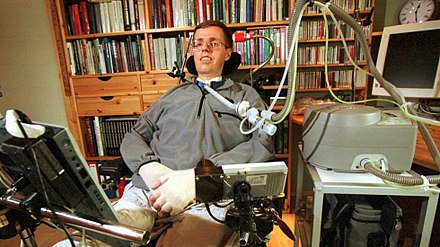Amyotrophic Lateral Sclerosis (ALS)
Amyotrophic Lateral Sclerosis (ALS), also known as Motor Neurone Disease (MND) or Lou Gehrig's Disease in the United States, is a rare neurodegenerative disorder that results in the progressive loss of upper and lower motor neurons, leading to muscle weakness and atrophy. The disease was first described by French neurologist Jean-Martin Charcot in 1869.

Signs & Symptoms
Early symptoms of ALS include muscle stiffness, twitching, and gradual weakness. As the disease progresses, individuals experience difficulty speaking, swallowing, and breathing. Over time, ALS leads to total paralysis and respiratory failure. Approximately 10-15% of patients develop frontotemporal dementia, and many others experience minor cognitive and behavioural difficulties.

Diagnosis
Diagnosing ALS involves a clinical diagnosis of exclusion based on progressive symptoms of upper and lower motor neuron degeneration. Supportive evidence is obtained from electromyography, genetic testing, and neuroimaging. Differential diagnoses include multifocal motor neuropathy, Kennedy's disease, hereditary spastic paraplegia, nerve compression syndrome, diabetic neuropathy, post-polio syndrome, myasthenia gravis, and multiple sclerosis.

Treatment
There is no known cure for ALS, and treatment focuses on slowing disease progression and managing symptoms to improve quality of life. Medications such as riluzole and edaravone can modestly extend survival. Non-invasive ventilation improves both quality and length of life, while mechanical ventilation can prolong survival without halting disease progression. Feeding tubes may be necessary to maintain nutrition.

Medications
Riluzole has been found to modestly prolong survival by about 2–3 months. Edaravone slows functional decline in early-stage ALS. Sodium phenylbutyrate/ursodoxicoltaurine extends life by around seven months. Tofersen, an antisense oligonucleotide, is used for SOD1-associated ALS.

Supportive Therapies
Physical therapy, occupational therapy, and speech therapy are very important in managing ALS. These therapies help maintain function, alleviate pain, and improve speech and swallowing. Assistive technologies like power wheelchairs, feeding tubes, and communication devices are often required as the disease progresses.

Prognosis and Epidemiology
The average survival from onset to death is two to four years, though about 10% of those affected survive longer than ten years. The incidence of ALS is approximately 1.6 per 100,000 individuals per year, and the lifetime risk is about 1 in 400 individuals. ALS is more common in men and typically presents between ages 45 and 75.

History
Descriptions of ALS date back to at least 1824. Jean-Martin Charcot first described the connection between symptoms and underlying neurological problems in 1869 and coined the term amyotrophic lateral sclerosis in 1874. ALS is sometimes referred to as Charcot's disease, and in the United States, it is often called Lou Gehrig's Disease after the famous baseball player.


Self-assessment MCQs (single best answer)
What is another name for Amyotrophic Lateral Sclerosis (ALS) in the United States?
Which neurologist first described ALS and coined its name?
Which of the following is NOT a common early symptom of ALS?
What does the acronym ALS stand for?
Which of the following medications is known to modestly prolong survival in ALS patients?
Which diagnostic tool is NOT typically used to support the diagnosis of ALS?
Which part of the nervous system is primarily affected by ALS?
What percentage of ALS patients develop frontotemporal dementia?
What is the average survival time from onset to death for ALS patients?
Which therapy is NOT typically used as supportive care in ALS?
Dentaljuce
Dentaljuce provides Enhanced Continuing Professional Development (CPD) with GDC-approved Certificates for dental professionals worldwide.
Founded in 2009 by the award-winning Masters team from the School of Dentistry at the University of Birmingham, Dentaljuce has established itself as the leading platform for online CPD.
With over 100 high-quality online courses available for a single annual membership fee, Dentaljuce offers comprehensive e-learning designed for busy dental professionals.
The courses cover a complete range of topics, from clinical skills to patient communication, and are suitable for dentists, nurses, hygienists, therapists, students, and practice managers.
Dentaljuce features Dr. Aiden, a dentally trained AI-powered personal tutor available 24/7 to assist with queries and provide guidance through complex topics, enhancing the learning experience.
Check out our range of courses, or sign up now!


